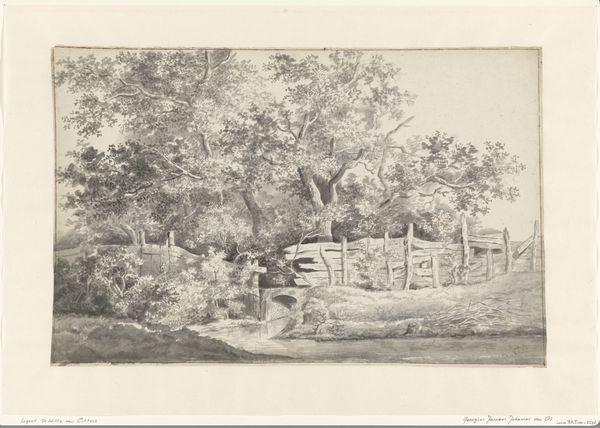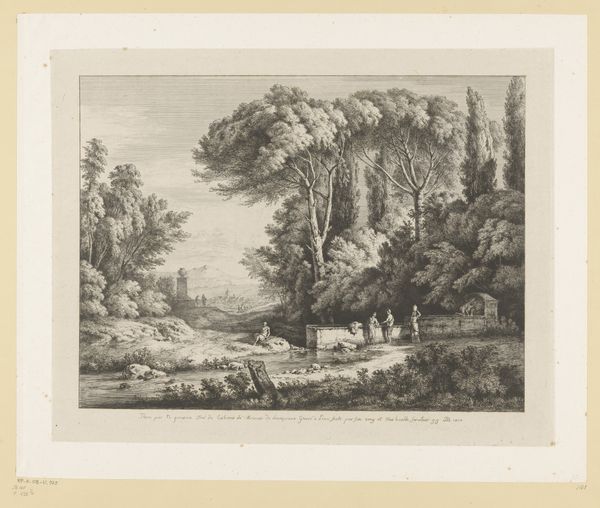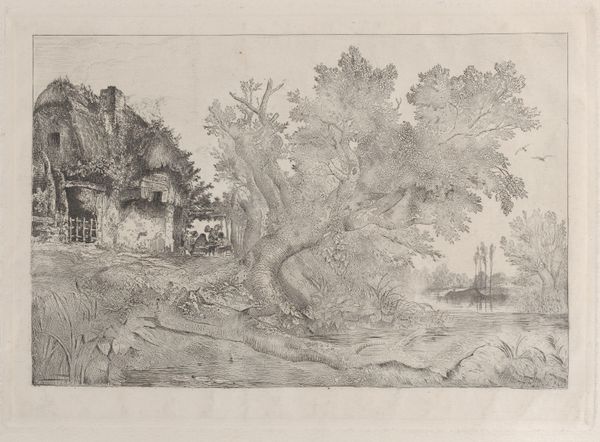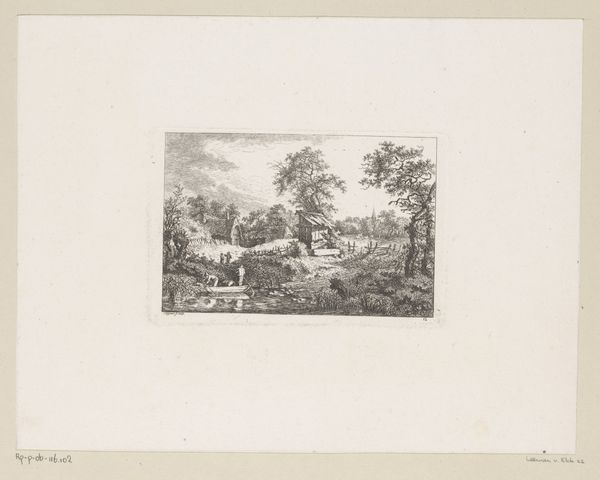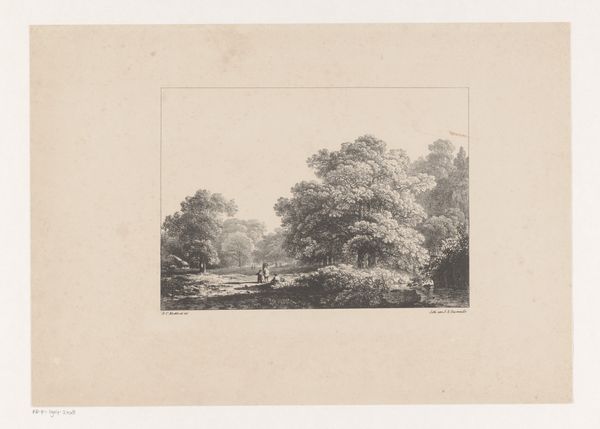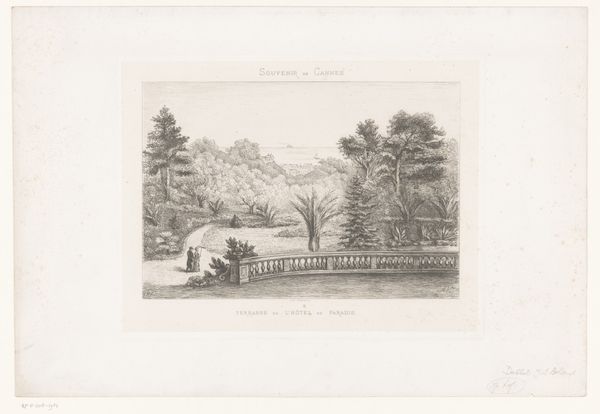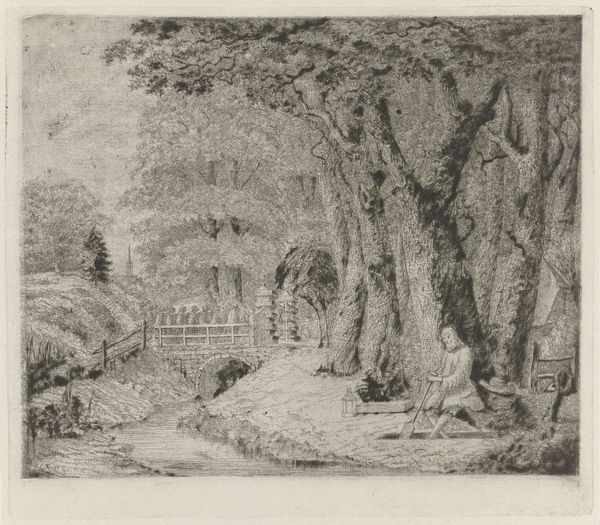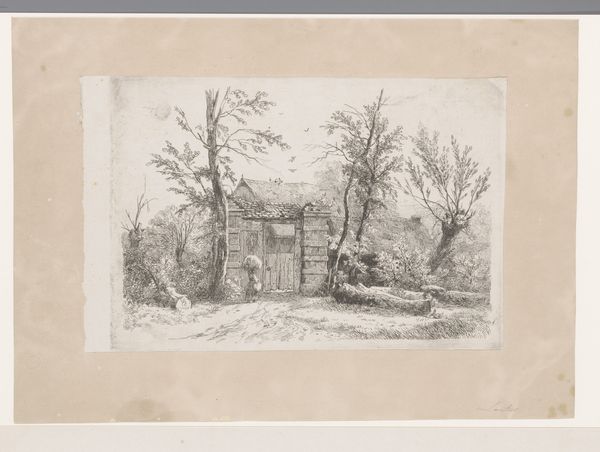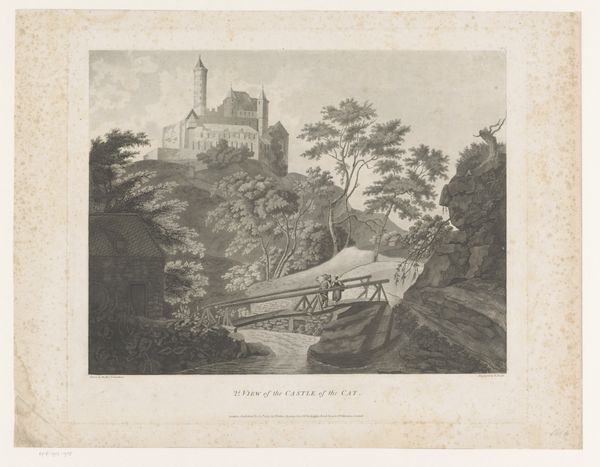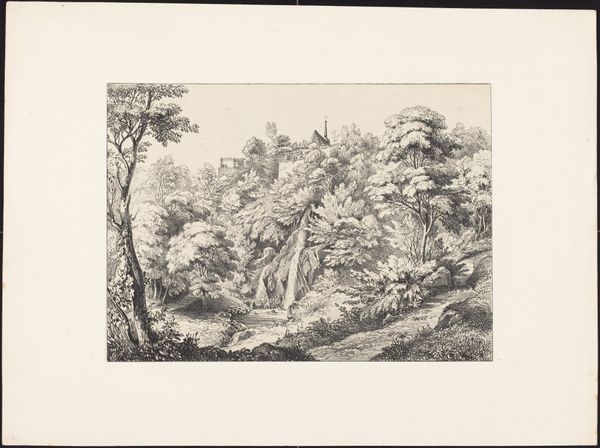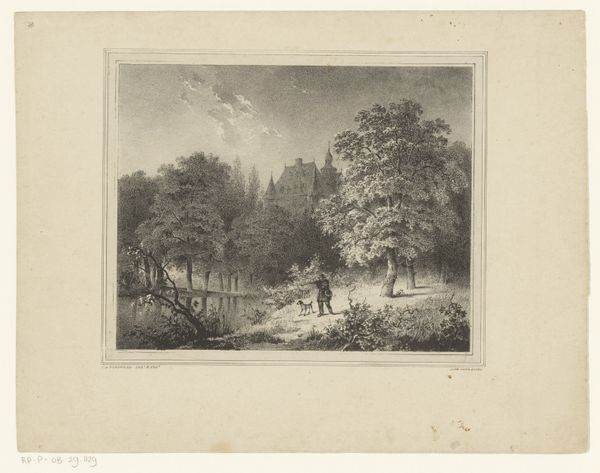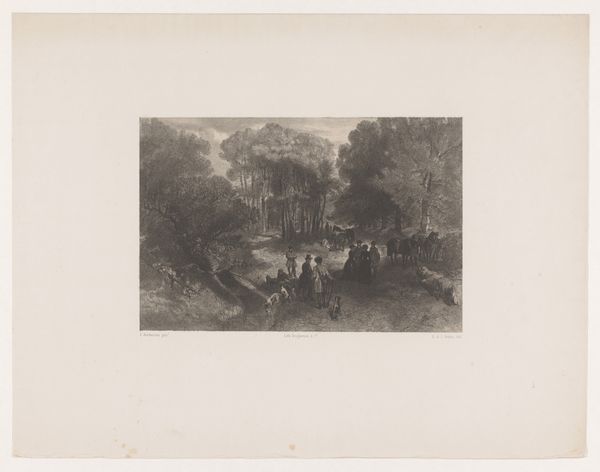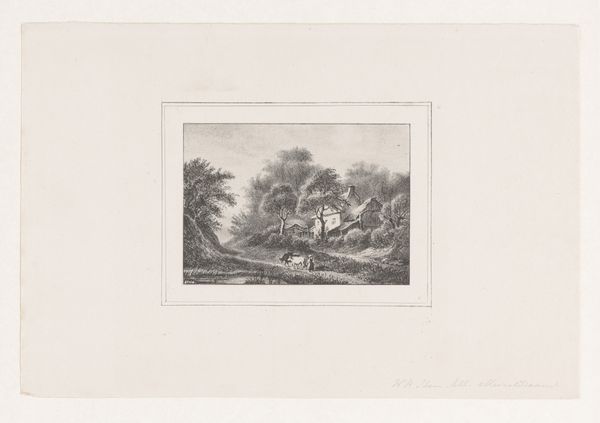
Omgewaaide boom in Bezuidenhout, na de storm van 28 mei 1860 1860
0:00
0:00
Dimensions: height 165 mm, width 245 mm
Copyright: Rijks Museum: Open Domain
Curator: At the Rijksmuseum, we're standing before Hendrik Wilhelmus Last's 1860 graphite drawing, “Omgewaaide boom in Bezuidenhout, na de storm van 28 mei 1860," depicting a fallen tree after a storm. Editor: There's something inherently melancholic about the scene; the subdued tones, the toppled giant… It evokes a feeling of quiet devastation. The artist's careful pencil work, it looks almost photographic, makes it so realistic. Curator: The choice to record this scene, rather than a victorious battle or idealized landscape, speaks volumes about the shifting social values of the time. The storm wasn’t just weather; it represented the unpredictable forces impacting daily life and the fragility of man's domain. Editor: Precisely! Observe how the diagonal line of the fallen tree leads the eye directly toward that small stone bridge. A perfect symbolic alignment to showcase not just nature's force, but its intersection with, perhaps even a challenge to, human artifice. Curator: The romanticism here is unmistakable. We're seeing nature as both a source of beauty and of untamed, even destructive, power. Remember, this was a period when urbanization was rapidly altering the Dutch landscape. Storms felt especially threatening in that context. Editor: Technically speaking, look at the varied textures! The soft, feathery leaves against the rough, splintered bark – it's a study in contrasts, and incredibly sophisticated. I wonder what artistic principles influenced Last’s composition. Curator: I think his audience, largely middle-class and increasingly aware of their own place in the world, appreciated this blend of familiar scenery and dramatic event. These were powerful visual metaphors for navigating an era of intense societal change. Editor: Indeed. A somber and highly considered composition, but also, strangely, reassuringly eternal, as an artwork can make an ephemera still. Curator: I find that thought beautifully poignant. And it perfectly encapsulates Last's intention. Editor: Absolutely, an artist immortalizing ephemerality. What more could be desired?
Comments
No comments
Be the first to comment and join the conversation on the ultimate creative platform.
